
I have no shame in saying it: I think blankets are great. If that's not manly, I don't care. Being cold is stupid, and being stupid definitely isn't manly either. I work from home, in a city that gets quite cold in the winter, and there's absolutely no reason to heat the whole house when it's only occupied by me, crunched up with my laptop. But you know what else I like? Picnics. And not freezing in case I have car trouble in the winter, or when I go camping. And snuggling up with my wife. (And pretending my urban townhome is a mountain cabin retreat...but, you know, personal preference). The common factor: blankets. So, I like 'em. I also believe - like many things - it's worth investing in a nice one that will last you for decades, repel odors, dirt and other aspects of aging, and will never go out of style. So, here are five high-quality blankets that are masculine, have timeless styling, and just look like the kind of blanket a guy should have. Since they're an essential part of the winter edition of "10 Things Every Man Should Own," here are five that are worth the investment:

1. Classic olive drab military blanket - $21.02 These guys have been made for hundreds of years, and they'll continue to be made for hundreds more. This affordable option is 70% wool and 30% "reprocessed" materials, likely acrylic, but that's more natural material than lots of the bedding out there. Plus at little more than two $20s, you can't lose. This one is nice and thin, and would fit well into a backpack or rolled up and stashed somewhere for emergencies. Plus, it's quite large, and would make a great source for cutting up to make sewing and other projects. Certainly cheaper than felt from the fabric store, and likely a higher quality.

2. Faribault Foot Soldier - $250 Faribault has been making this blanket to the same specifications since 1917, but likely dates as far back as 1897. This 100% wool option was "originally designed to accommodate the widely varying temperatures of Cadet sleeping quarters, the 'double cloth' construction of this blanket results in a warm, heavy, yet breathable product." Shown here in a varsity-like maroon with stripe, but it's available in military green, grey, and cream.

3. Old Hickory Wool Buffalo Throw Blanket by Pendleton - $160 I doubt I'll ever be able to pull off a lumberjack plaid in a shirt or jacket, but the classic red/black Pendleton might do the trick. "The ultimate bunk room blanket. Big, bold colors give attitude to this rugged yet refined blanket. It's a lofty yet down-to-earth statement for loft, lodge, cabin or kids' bunk room.

4. Woolrich Civil War Calvary Blanket - $109.00 Woolrich made the Civil War blanket and supplied it to troops from 1861-65. The current blanket is made from wool fabric bolts Woolrich mills for recreationist groups and movie studios for authenticity. The navy brings just a bit of color over an olive or grey, but is subtle enough to drape over a sofa or easy chair.

5. Pendleton Yakima Camp Blanket - $119.00 86% Wool and 14% cotton keeps these camp blankets natural. "Camp blankets were first designed to meet the rigorous demands of the wild and untamed Pacific Northwest and were a favorite of the early sheepherders in the Northwest. Today, these warm and hardy blankets offer outstanding service and rugged styling that will provide years of warmth and comfort." I'll have one in each color.
[Top Image: Faribault Foot Solider Grey with Stripe]
This ManMade post was originally published in February 2013. We're resharing now cause it's definitely blanket season.







 So you’ve figured out what you want to build, bought all the wood, and have a fresh cup of coffee in hand. Now it’s time to start marking lines and making some sawdust and shavings. When it comes to accurate fits and great looking pieces, it’s essential to have quality marking tools. When I first started out working with wood, I was using a wide, stocky carpenter’s pencil. That 1/8” lead line was easy to see, but really didn’t provide the accuracy to make a 1/32” precision cut. After a while I moved to mechanical pencils with the much thinner line, but it was prone to breaking and so I finally landed on knives for a clean, crisp line that could be relied upon for a tight fitting cut when it came time to put it all together. Knives are used to “strike” a line, which means making a very small surface score along the ruler or edge. This thin line doesn’t show up as a black mark on the surface, but still provides a very accurate cut reference. My first blade was an exacto-knife, but I’ve graduated to a bit heftier and dedicated marking tools. Here are a few of what I consider my essential tools for making my marks in the shop.
So you’ve figured out what you want to build, bought all the wood, and have a fresh cup of coffee in hand. Now it’s time to start marking lines and making some sawdust and shavings. When it comes to accurate fits and great looking pieces, it’s essential to have quality marking tools. When I first started out working with wood, I was using a wide, stocky carpenter’s pencil. That 1/8” lead line was easy to see, but really didn’t provide the accuracy to make a 1/32” precision cut. After a while I moved to mechanical pencils with the much thinner line, but it was prone to breaking and so I finally landed on knives for a clean, crisp line that could be relied upon for a tight fitting cut when it came time to put it all together. Knives are used to “strike” a line, which means making a very small surface score along the ruler or edge. This thin line doesn’t show up as a black mark on the surface, but still provides a very accurate cut reference. My first blade was an exacto-knife, but I’ve graduated to a bit heftier and dedicated marking tools. Here are a few of what I consider my essential tools for making my marks in the shop.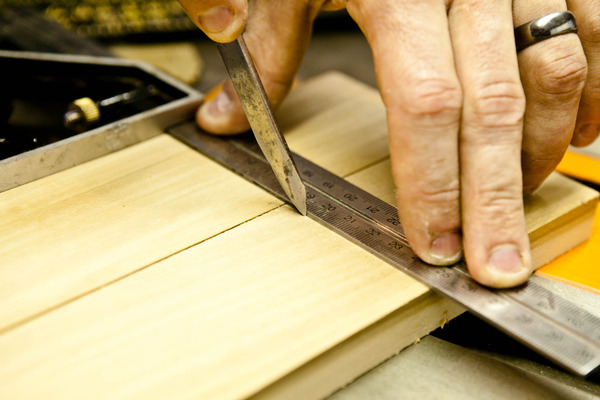
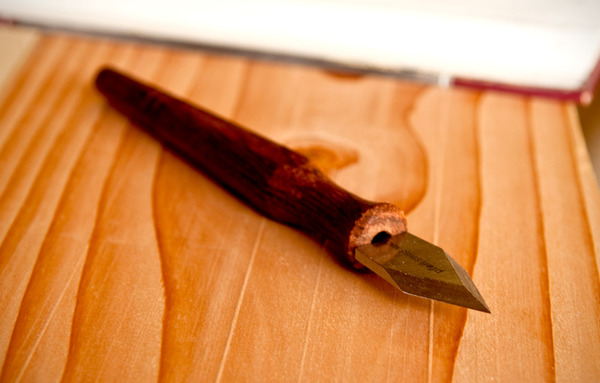
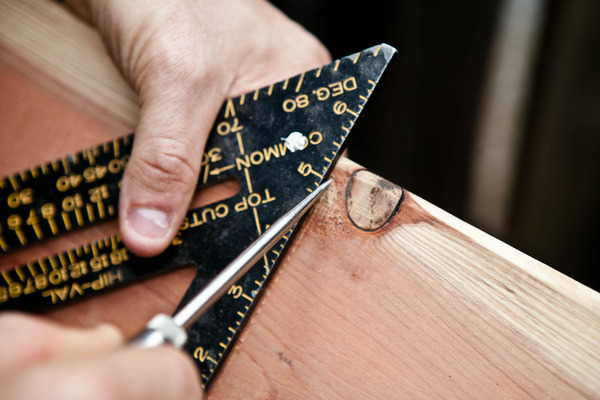

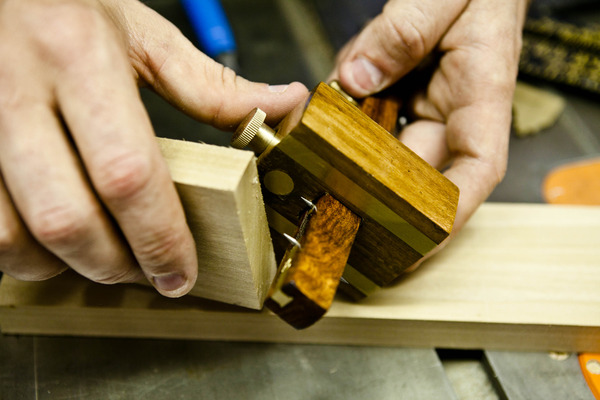


![credit: Art of Manliness [http://www.artofmanliness.com/2014/03/25/facial-hair-signal/]](http://assets.manmadediy.com/photos/27313/beards_large.jpg?1446449672) It’s the official first week of No-Shave-November, Novembeard, etc. and I imagine a lot of us are hitting that grind full-on. Beyond the manly feeling a hearty beard can bring, have you ever considered the social benefits/cost of sporting the scruff? The Science of Facial Hair dissects the social aspects of having a beard and its implication in the workplace and dating market, as well as the personal benefits/costs.
It’s the official first week of No-Shave-November, Novembeard, etc. and I imagine a lot of us are hitting that grind full-on. Beyond the manly feeling a hearty beard can bring, have you ever considered the social benefits/cost of sporting the scruff? The Science of Facial Hair dissects the social aspects of having a beard and its implication in the workplace and dating market, as well as the personal benefits/costs. ![credit: Art of Manliness [http://www.artofmanliness.com/2014/03/25/facial-hair-signal/]](http://assets.manmadediy.com/photos/27314/hanksbeard_large.jpg?1446449674) Did you know for example that while the ideally desired beard to clean-shaven ratio from women varies drastically from woman to woman, studies indicate that generally most attractive beard length is what they call the “10 Day Growth,” i.e. long enough to prove that you’re packing enough testosterone to bring out a full beard, but short enough to still seem sociable and approachable.
Did you know for example that while the ideally desired beard to clean-shaven ratio from women varies drastically from woman to woman, studies indicate that generally most attractive beard length is what they call the “10 Day Growth,” i.e. long enough to prove that you’re packing enough testosterone to bring out a full beard, but short enough to still seem sociable and approachable.![credit: Art of Manliness [http://www.artofmanliness.com/2014/03/25/facial-hair-signal/]](http://assets.manmadediy.com/photos/27315/beardint_large.jpg?1446449675)
![credit: Merchants and Makers [http://www.merchantandmakers.com/letterpress-printing-hand-and-eye/] Hand Eye Letterpress](http://assets.manmadediy.com/photos/27311/Merchant-and-Makers-Letterpress-Printers-1-Hand-Eye-Front-Page_large.jpg?1446447276) You've definitely seen many things printed by letterpress, but perhaps never understood or really appreciated the skill and effort it took to place row upon row of small letter blocks and hand ink the plates for pressing.
You've definitely seen many things printed by letterpress, but perhaps never understood or really appreciated the skill and effort it took to place row upon row of small letter blocks and hand ink the plates for pressing. ![credit: Merchants and Makers [http://www.merchantandmakers.com/letterpress-printing-hand-and-eye/] Holding a Printing Plate Rack](http://assets.manmadediy.com/photos/27312/Merchant-and-Makers-Letterpress-Printers-4-Hand-Eye-A-four-page-forme-ready-for-the-press_large.jpg?1446447278)
















 As we move into the cooler weather, it's time to take a hard look at your daily groom and throw out those empties for something a bit better. There are places in life to save a few dimes but when it comes to your morning prep, go ahead and spring for the right stuff. Not the expensive stuff, but the best picks for you and your needs.
As we move into the cooler weather, it's time to take a hard look at your daily groom and throw out those empties for something a bit better. There are places in life to save a few dimes but when it comes to your morning prep, go ahead and spring for the right stuff. Not the expensive stuff, but the best picks for you and your needs.


![credit: Turtles and Tails [http://turtlesandtails.blogspot.com/2013/03/diy-sofa-table.html] Plugs](http://assets.manmadediy.com/photos/27360/plug1_large.jpg?1447056510) I'm always looking for a place to set my glass when I'm sitting at the couch. Build this simple table with outlets that fits between the wall and the sofa so you can keep your drink close, and no more digging around behind the couch to plug in your laptop.One of the most annoying problems in my house is ending up with a wet lap because I couldn't find a good spot to set down my drink. This simple sofa table is a convenient way to get some extra space, and throw in a few outlets to charge your electronics at the same time. (Note: don't DIY electrical unless you know what you're doing. Their advice in this realm is a bit shoddy).
I'm always looking for a place to set my glass when I'm sitting at the couch. Build this simple table with outlets that fits between the wall and the sofa so you can keep your drink close, and no more digging around behind the couch to plug in your laptop.One of the most annoying problems in my house is ending up with a wet lap because I couldn't find a good spot to set down my drink. This simple sofa table is a convenient way to get some extra space, and throw in a few outlets to charge your electronics at the same time. (Note: don't DIY electrical unless you know what you're doing. Their advice in this realm is a bit shoddy).![credit: Turtles and Tails [http://turtlesandtails.blogspot.com/2013/03/diy-sofa-table.html] Unfinished](http://assets.manmadediy.com/photos/27361/table7_large.jpg?1447056512)
![credit: Turtles and Tails [http://turtlesandtails.blogspot.com/2013/03/diy-sofa-table.html] Finished Table](http://assets.manmadediy.com/photos/27362/table+9_large.jpg?1447056513)
![[Image Credit] Bryson Handmade Olive Wood Necklace for Valentines](http://s3.amazonaws.com/manmadediy-uploads-production/photos/24715/IMG_1251_large.jpg?1423452614)
![[Image Credit] Bryson created at: 02/08/2015](http://s3.amazonaws.com/manmadediy-uploads-production/photos/24704/IMG_1171-2_large.jpg?1423452349)
![[image credit] Bryson Handmade Olive Wood Necklace for Valentines](http://s3.amazonaws.com/manmadediy-uploads-production/photos/24705/IMG_1179-2_large.jpg?1423452358)
![[image credit] Bryson Handmade Olive Wood Necklace for Valentines](http://s3.amazonaws.com/manmadediy-uploads-production/photos/24706/IMG_1183-2_large.jpg?1423452373)
![[image credit] Bryson Handmade Olive Wood Necklace for Valentines](http://s3.amazonaws.com/manmadediy-uploads-production/photos/24707/IMG_1192-2_large.jpg?1423452515)
![[image credit] Bryson Handmade Olive Wood Necklace for Valentines](http://s3.amazonaws.com/manmadediy-uploads-production/photos/24708/IMG_1193-2_large.jpg?1423452534)
![[image credit] Bryson Handmade Olive Wood Necklace for Valentines](http://s3.amazonaws.com/manmadediy-uploads-production/photos/24709/IMG_1197-2_large.jpg?1423452548)
![[image credit] Bryson Handmade Olive Wood Necklace for Valentines](http://s3.amazonaws.com/manmadediy-uploads-production/photos/24710/IMG_1198-2_large.jpg?1423452560)
![[Image Credit] Bryson Handmade Olive Wood Necklace for Valentines](http://s3.amazonaws.com/manmadediy-uploads-production/photos/24712/IMG_1206-2_large.jpg?1423452584)
![[Image credit] Bryson Handmade Olive Wood Necklace for Valentines](http://s3.amazonaws.com/manmadediy-uploads-production/photos/24711/IMG_1211_large.jpg?1423452571)
![[Image Credit] Bryson Handmade Olive Wood Necklace for Valentines](http://s3.amazonaws.com/manmadediy-uploads-production/photos/24714/IMG_1215_large.jpg?1423452606)





![credit: Chiot's Run (cc) [https://www.flickr.com/photos/chiotsrun/6400005269/in/photolist-aKxGAr-8BwxgL-4YPMMi-9ZgTkh-6u8MpD-pcpXqC-jEKbhS-fqKvo3-wVrB3Q-aogpZF-f39J6W-nLzWAj-pLqBXU-bZrxdy-dQiLXb-5Ttqfe-9TFdNf-hPFRbb-6M6XCF-8oGcBm-7sLcha-5ydVFZ-e9hczV-qKy4WF-686vna-79oMmJ-81iGo4-8H5Rv5-7EWMdG-ebSxBr-gc1W4b-vZaukQ-fCXxzV-bR1PrK-tavFvW-zCQPKj-ejrg7M-qdvyLc-b2eKxe-uqW4PG-abZDdH-edRKtS-p4KwJQ-p4Wjda-f5MfpV-7Pq92s-9XcPgY-b2zNvx-7d3nHd-rdEhQg] created at: 11/08/2015](http://assets.manmadediy.com/photos/27344/6400005269_70a54bf528_z_large.jpg?1447016511) You’ve heard it said that baking is a science and cooking is an art, but the science behind baking something as simple as bread is such a mind-boggling stream of interconnected processes all working together to finish in one harmonious piece, it makes you question the adage. Whether you’re a baking novice or a seasoned veteran,
You’ve heard it said that baking is a science and cooking is an art, but the science behind baking something as simple as bread is such a mind-boggling stream of interconnected processes all working together to finish in one harmonious piece, it makes you question the adage. Whether you’re a baking novice or a seasoned veteran, ![credit: Popular Mechanics [http://www.popularmechanics.com/home/how-to/a11070/how-to-make-bread-17089346/]](http://assets.manmadediy.com/photos/27345/54cb47227aace_-_how-to-make-bread-01-0814-de_large.jpg?1447016694) The inquiry Greer conducts is done in conjunction with this mother (a professor of food chemistry) and
The inquiry Greer conducts is done in conjunction with this mother (a professor of food chemistry) and  While it's great when pieces fit nice and tight, sometimes you need a bit more . . . persuasion. Enter the mallet. A mallet is generally larger than a traditional framing hammer, and adds a bit of heft right where it's needed. Plus a mallet's striking surface usually isn't metal, which allows you to knock-together pieces or strike wooden-handled chisels without damaging them. Remember, the rule is: metal strikes metal, wood strikes wood. (Or plastic and rubber).
While it's great when pieces fit nice and tight, sometimes you need a bit more . . . persuasion. Enter the mallet. A mallet is generally larger than a traditional framing hammer, and adds a bit of heft right where it's needed. Plus a mallet's striking surface usually isn't metal, which allows you to knock-together pieces or strike wooden-handled chisels without damaging them. Remember, the rule is: metal strikes metal, wood strikes wood. (Or plastic and rubber).  1. Dead Blow Hammer (pictured on left): The head of this wooden or plastic mallet has a hollow space, filled partially with loose weight (sand, lead pellets, metal pieces). This allows for the momentum of the material inside to be transferred to the head with less swinging force. The way it works, is that the weight moves to the far side of the head on the down stroke, then on impact it pushes forward thanks to momentum. Visualize a double tap, with the first being the head striking the surface, and then the weight of the material inside of the head catching up for a second strong tap.
1. Dead Blow Hammer (pictured on left): The head of this wooden or plastic mallet has a hollow space, filled partially with loose weight (sand, lead pellets, metal pieces). This allows for the momentum of the material inside to be transferred to the head with less swinging force. The way it works, is that the weight moves to the far side of the head on the down stroke, then on impact it pushes forward thanks to momentum. Visualize a double tap, with the first being the head striking the surface, and then the weight of the material inside of the head catching up for a second strong tap.
![credit: Makendo [http://www.instructables.com/id/Easy-wooden-mallet/]](http://assets.manmadediy.com/photos/27369/FIQGN95I28W9NPW.MEDIUM_large.jpg?1447358005)



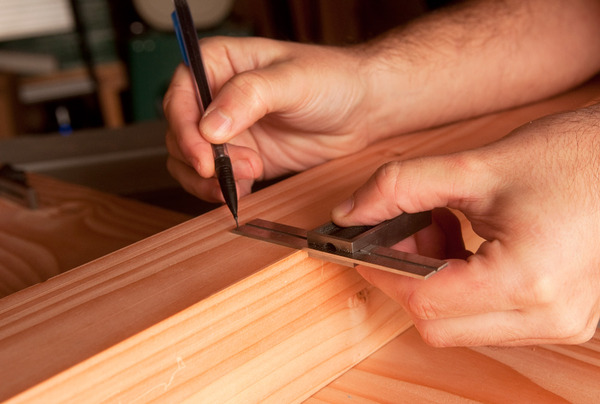



![credit: GQ [http://www.gq.com/story/motorcycle-bikes-gear-buying-guide]](http://assets.manmadediy.com/photos/27348/blogs-the-feed-steve-mcqueen-guide-to-buying-a-motorcycle_large.jpg?1447018611) Most men I know like motorcycles, at least in the abstract. My friends and I often talk about which bikes we want and in what order, all to varying degrees of seriousness since none of us actually own any bikes (I did briefly have a motorcycle license though, which I felt was a step in the right direction). However if you’re interested in pursuing the prospective-first-motorcycle-purchase conversation a little further, GQ’s
Most men I know like motorcycles, at least in the abstract. My friends and I often talk about which bikes we want and in what order, all to varying degrees of seriousness since none of us actually own any bikes (I did briefly have a motorcycle license though, which I felt was a step in the right direction). However if you’re interested in pursuing the prospective-first-motorcycle-purchase conversation a little further, GQ’s ![credit: Transmission77 (cc)[https://www.flickr.com/photos/transmission77/3720659123/in/photolist-6EMmke-6iojTA-6iogrq-6ijhct-6ijf8p-6iopCJ-6EMnni-6ERwRy-6ioPPU-6V6myW-foQnrF-6Roafw-pMqcie-2mkhar-9aoEsZ-6ip77J-6ioM67-6ijCgK-6ijGZe-eUA3Ra-6ijvrT-6ijdLx-6ijhG6-6iotu3-6ijpBi-eXbczh-eXbi17-6ERxo7-6ioS3L-6ioQxA-6ip2sA-w2ucEK-eXaPnm-eXaHad-6ijwLH-4KGoXL-6ijQpP-fssLDk-eWYG3R-eWZ1p6-6ip43A-b5TVEi-pMutXA-6ijze2-4gSR1U-5pLf6E-6ijj2F-6ioisQ-31dYeL-oWgWs4] created at: 11/08/2015](http://assets.manmadediy.com/photos/27347/3720659123_d24af59035_z_large.jpg?1447018505) Get the skinny on the actual price of a start-up bike from the initial costs (usually between $5,000 and $10,000) to your inevitable insurance hike to the continued cost of equipment and maintenance. Then there’s also the personal protective gear to consider, and this guide gives you a great lens into what you should really be looking for. I actually found it most insightful when it came to what the average aspiring motorcycle owner should look for in a first motorcycle in terms of horsepower, handling, size, etc.
Get the skinny on the actual price of a start-up bike from the initial costs (usually between $5,000 and $10,000) to your inevitable insurance hike to the continued cost of equipment and maintenance. Then there’s also the personal protective gear to consider, and this guide gives you a great lens into what you should really be looking for. I actually found it most insightful when it came to what the average aspiring motorcycle owner should look for in a first motorcycle in terms of horsepower, handling, size, etc.![credit: Flowing Data [http://flowingdata.com/2015/10/26/top-brewery-road-trip-routed-algorithmically/]](http://assets.manmadediy.com/photos/27343/topbreweryroadtrip_large.jpg?1447016205) It goes without saying that drinking and driving don’t mix. But how about cross-country driving and hitting up the best craft breweries in the same area all in one go? Not a bad plan, but how would you decide which breweries are worth you time (there are currently over 4,000 craft breweries in America)?
It goes without saying that drinking and driving don’t mix. But how about cross-country driving and hitting up the best craft breweries in the same area all in one go? Not a bad plan, but how would you decide which breweries are worth you time (there are currently over 4,000 craft breweries in America)? 


 1. I'm much more of a natural cranberries and pinecones kinda of Christmas guy than the big red bow type. So, I was happy to find these Winslow wreaths that fit the bill perfectly. When you're looking for wreaths, find versions that have a nice balance of materials. You can always move or reorder the decorations. Here, we snipped off the big flat green silk leaves for a more streamlined look.
1. I'm much more of a natural cranberries and pinecones kinda of Christmas guy than the big red bow type. So, I was happy to find these Winslow wreaths that fit the bill perfectly. When you're looking for wreaths, find versions that have a nice balance of materials. You can always move or reorder the decorations. Here, we snipped off the big flat green silk leaves for a more streamlined look. 














